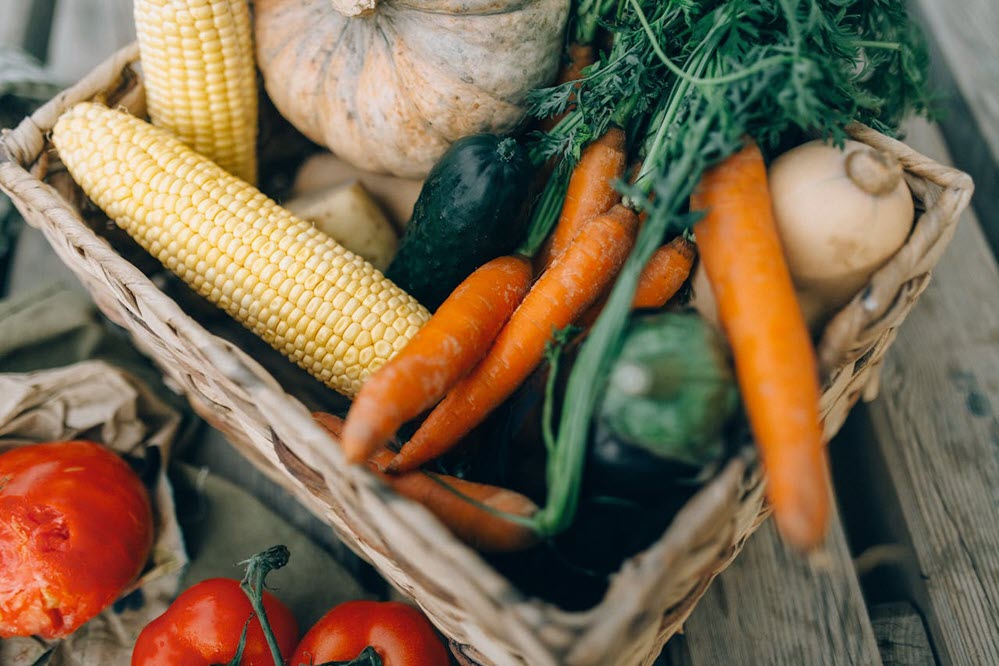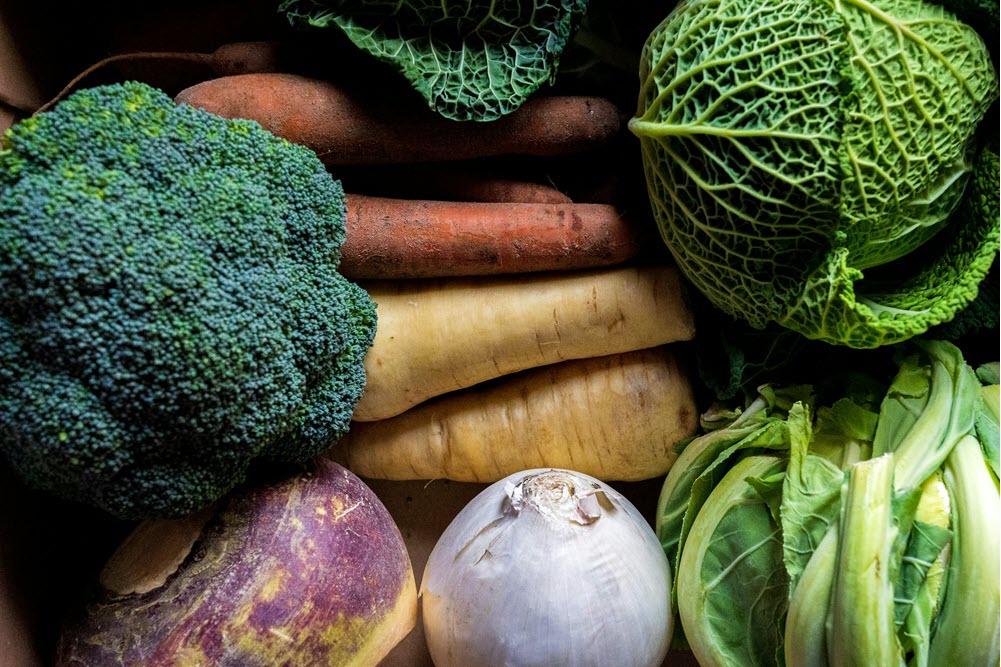
In recent years, there has been a notable shift in dietary preferences among older adults towards incorporating more fresh, whole foods into their diets. This fresh food renaissance represents a departure from processed and convenience foods and reflects a growing awareness of the importance of nutrition for overall health and well-being.
In this article, we’ll explore the factors driving this trend among older adults, from the rise of farmers’ markets and community-supported agriculture (CSA) programs to the increasing popularity of plant-based diets. We’ll also delve into the potential health benefits of these dietary changes and provide tips for older adults looking to embrace a fresher, healthier approach to eating.
The Shift Away from Processed Foods
One of the key drivers behind the fresh food renaissance among older adults is a growing recognition of the health risks associated with processed foods. Processed foods are often high in refined sugars, unhealthy fats, and sodium, and low in essential nutrients like vitamins, minerals, and fiber.
For older adults, who may be more susceptible to chronic health conditions such as heart disease, diabetes, and hypertension, reducing consumption of processed foods can have significant benefits for overall health and well-being.
The Rise of Farmers’ Markets and CSA Programs
Farmers’ markets and community-supported agriculture (CSA) programs have become increasingly popular among older adults seeking to incorporate more fresh, locally sourced foods into their diets. These direct-to-consumer channels offer a wide variety of fresh fruits, vegetables, meats, and dairy products, often sourced from local farms and producers.
By shopping at farmers’ markets or participating in CSA programs, older adults can support local agriculture, access seasonal produce at its peak freshness, and connect with farmers and food producers in their communities. Produce sourced in this way may also be cheaper, which is another huge benefit.
Nutritional Fresh Foods for Easier Aging

As seniors prioritize fresh, whole foods in their diets, many specifically focus on nutrient-rich foods known for their potential to support healthy aging. These foods offer a range of vitamins, minerals, antioxidants, and other compounds that can help address age-related concerns and promote overall well-being. Some nutritional fresh foods that seniors are embracing include:
Berries
Blueberries, strawberries, raspberries, and blackberries are packed with antioxidants that help combat inflammation and oxidative stress, which are associated with age-related conditions like cardiovascular disease, cognitive decline, and certain cancers.
Leafy Greens
Spinach, kale, Swiss chard, and other leafy greens are rich in vitamins A, C, and K, as well as folate, calcium, and magnesium. These nutrients support bone health, immune function, and cognitive function, making them valuable additions to the diets of older adults.
Older adults who are taking blood thinners may need to be wise with these vegetables, as vitamin K impacts some blood thinners (including warfarin). Most of the time, seniors won’t need to avoid leafy greens, but their medication levels may need to be balanced based on their vitamin K intake.
Fatty Fish
Salmon, mackerel, sardines, and trout are excellent sources of omega-3 fatty acids. These acids have anti-inflammatory properties and are important for heart, brain, and joint health. Including fatty fish in seniors’ diets can help them maintain cognitive function and reduce the risk of heart disease and arthritis.
Nuts and Seeds
Almonds, walnuts, chia seeds, and flaxseeds are rich in healthy fats, fiber, protein, vitamins, and minerals. These nutrient-dense foods can help seniors manage cholesterol levels, support digestive health, and provide sustained energy throughout the day.
Nuts and seeds are also fantastic for seniors with low appetites, as they can simply eat a few nuts at a time as a snack.
Whole Grains
Quinoa, brown rice, oats, and barley are examples of whole grains rich in fiber, vitamins, minerals, and antioxidants. Incorporating whole grains into seniors’ diets can help them maintain steady blood sugar levels, support digestive health, and reduce the risk of chronic diseases like type 2 diabetes and heart disease.
These grains are especially powerful when they’re used instead of processed alternatives like white rice.
Avocados
Avocados are creamy, nutrient-rich fruits that are high in heart-healthy monounsaturated fats, fiber, potassium, and vitamins E and K. Incorporating avocados into their diets can help seniors maintain healthy cholesterol levels, support cardiovascular health, and promote satiety and weight management.
By including these nutritional fresh foods in their diets, seniors can support their overall health and well-being as they age, making the aging process easier and more enjoyable.
The Increasing Popularity of Plant-Based Diets
Plant-based diets, which emphasize fruits, vegetables, whole grains, legumes, nuts, and seeds while minimizing or eliminating animal products, have gained traction among older adults in recent years. Plant-based diets are rich in essential nutrients, high in fiber, and low in saturated fats, making them a nutritious choice for older adults looking to improve their health and reduce their risk of chronic diseases.
Additionally, plant-based diets have been associated with a lower environmental footprint, aligning with older adults’ desire to make sustainable food choices.
Health Benefits of Fresh, Whole Foods for Older Adults
The shift towards fresh, whole foods among older adults can have numerous health benefits, including:
- Improved Heart Health: Fresh fruits, vegetables, whole grains, and plant-based proteins are rich in antioxidants, vitamins, minerals, and dietary fiber, which have been shown to support cardiovascular health and reduce the risk of heart disease.
- Better Digestive Health: Whole foods are easier to digest and less likely to cause gastrointestinal discomfort than processed foods, making them better for older adults with digestive issues or sensitivities.
- Enhanced Cognitive Function: Nutrient-rich foods like fruits, vegetables, nuts, and seeds contain compounds that support brain health and cognitive function, potentially reducing the risk of cognitive decline and dementia in older adults.
- Increased Energy Levels: Fresh, whole foods provide sustained energy without the crashes associated with sugary or processed foods, helping older adults maintain energy levels throughout the day and support an active lifestyle.
Tips for Embracing a Fresh, Healthy Approach to Eating
For older adults looking to embrace a fresher, healthier approach to eating, here are some tips to get started:
- Shop Local: Visit farmers’ markets, farm stands, or participate in CSA programs to access fresh, locally sourced produce, meats, and dairy products.
- Prioritize Plant Foods: Incorporate more fruits, vegetables, whole grains, legumes, nuts, and seeds into your meals and snacks to reap the health benefits of a plant-based diet.
- Cook at Home: Experiment with cooking and preparing meals at home using fresh, whole ingredients to control portion sizes, reduce added sugars and unhealthy fats, and maximize nutritional content.
- Stay Hydrated: Drink plenty of water throughout the day to stay hydrated and support overall health and well-being.
- Seek Support: Connect with friends, family members, or community groups who share your interest in fresh, healthy eating for support, encouragement, and recipe ideas.
The fresh food renaissance among older adults reflects a growing awareness of the importance of nutrition for overall health and well-being. Older adults can enjoy numerous health benefits and support a healthier, more vibrant lifestyle by embracing fresh, whole foods and incorporating more fruits, vegetables, whole grains, and plant-based proteins into their diets.
With the rise of farmers’ markets, CSA programs, and the increasing availability of fresh, locally sourced foods, there has never been a better time for older adults to embrace a fresh, healthy approach to eating.

Leave a Reply